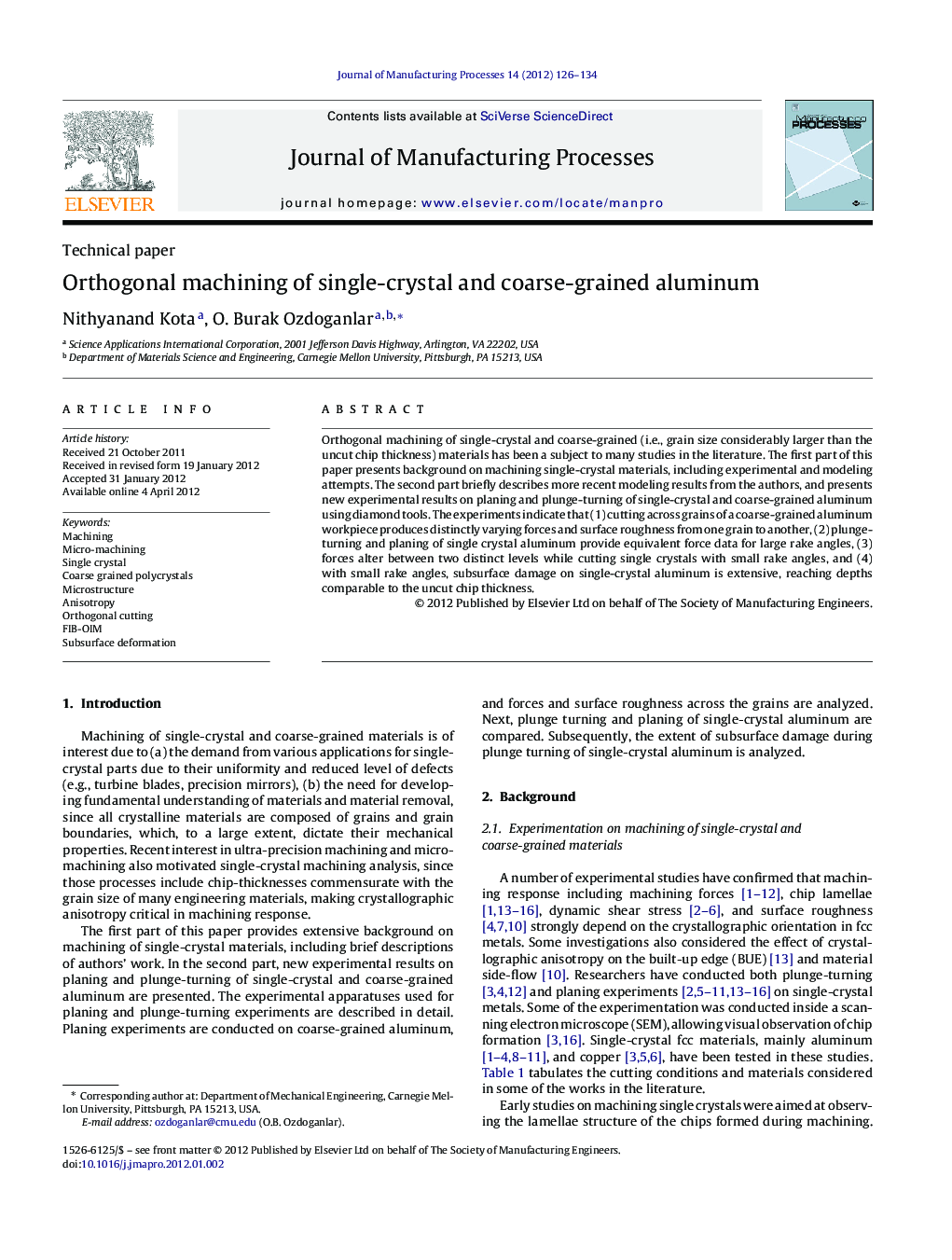| Article ID | Journal | Published Year | Pages | File Type |
|---|---|---|---|---|
| 1697223 | Journal of Manufacturing Processes | 2012 | 9 Pages |
Orthogonal machining of single-crystal and coarse-grained (i.e., grain size considerably larger than the uncut chip thickness) materials has been a subject to many studies in the literature. The first part of this paper presents background on machining single-crystal materials, including experimental and modeling attempts. The second part briefly describes more recent modeling results from the authors, and presents new experimental results on planing and plunge-turning of single-crystal and coarse-grained aluminum using diamond tools. The experiments indicate that (1) cutting across grains of a coarse-grained aluminum workpiece produces distinctly varying forces and surface roughness from one grain to another, (2) plunge-turning and planing of single crystal aluminum provide equivalent force data for large rake angles, (3) forces alter between two distinct levels while cutting single crystals with small rake angles, and (4) with small rake angles, subsurface damage on single-crystal aluminum is extensive, reaching depths comparable to the uncut chip thickness.
